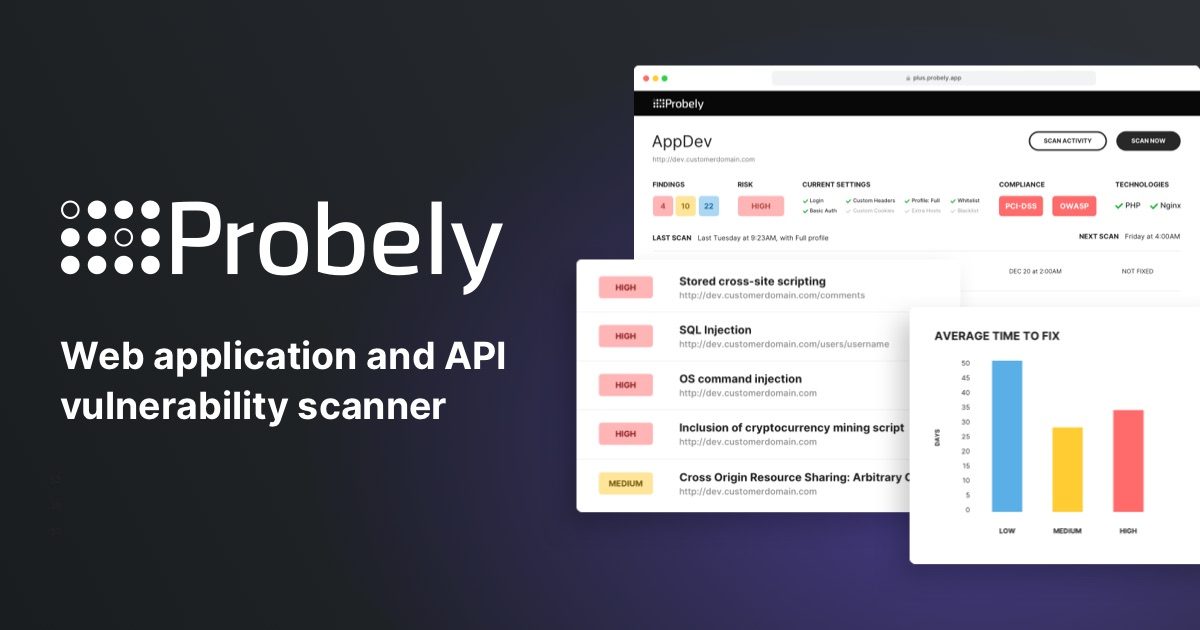
Probely’s Comprehensive Introduction to API Security
When developing an application, you require an interface to interact with it, which can be a user interface (UI) for users to engage with your application or an application programming interface (API) for other systems to communicate with your application.
Essentially, an API offers a service that provides methods and data formats for other systems to request actions and exchange information. When other systems send requests to an API for specific data or actions, the API processes those requests (which may involve accessing databases, resources, or other APIs) and sends back responses with data for other systems to utilize.
In today’s digital world, APIs have become a vital component of the digital landscape due to the significant growth in service providers and consumers using APIs. Examples include:
- The vast number of e-commerce platforms worldwide that process payments by integrating with API payment gateways like Stripe, PayPal, Square, etc.
- The wide range of applications integrating with platforms like Facebook, Instagram, or X (formerly Twitter) through their APIs for users to share content and feeds.
- The seamless connectivity between various apps such as mobile apps, TV apps, car apps, home automation apps, etc., all through APIs.
As the use of APIs expands and the complexity of interconnected digital systems grows, the risk of cyber attacks on APIs also increases. It is crucial to ensure robust security measures are in place to protect APIs and the entire digital ecosystem from potential threats.
If security is not properly implemented, an API can pose significant risks, leading to severe consequences such as compromising data integrity, data breaches, or service operation compromises. A breach in an API can have a cascading effect on clients and systems interacting with the API, ultimately jeopardizing the security of the entire ecosystem.
To raise awareness of the most critical API security threats, the Open Web Application Security Project (OWASP) investigates and releases a list of the top API security risks. Stay informed about the OWASP Top 10 API Security Risks to protect your APIs effectively.
API security challenges do not end here as there are additional risks. Consider exploring the OWASP Top 10 Web Application Security Risks as they may also be relevant to API security.
Below is the list of OWASP’s Top 10 API Security Risks for 2023:
OWASP Top 10 API Security Risks for 2023
| Risk | Description |
|---|---|
| API1:2023 Broken Object Level Authorization | APIs expose endpoints that handle object identifiers, creating a wide attack surface. Authorization checks must be implemented in functions accessing data sources using user-provided IDs. |
| API2:2023 Broken Authentication | Authentication mechanisms may be vulnerable, allowing attackers to compromise tokens or assume other users’ identities. Compromised authentication can jeopardize API security. |
| API3:2023 Broken Object Property Level Authorization | This risk category highlights the lack of proper authorization validation at the object property level, leading to information exposure or manipulation by unauthorized entities. |
Improving API security involves foundational principles like Authorization and Access Controls, Data Encryption, Input Validation, among others. Implementing these practices can bolster the security of your APIs against potential threats.
Authorization and Access Controls
Authorization and access controls dictate the actions or resources users or systems can access:

